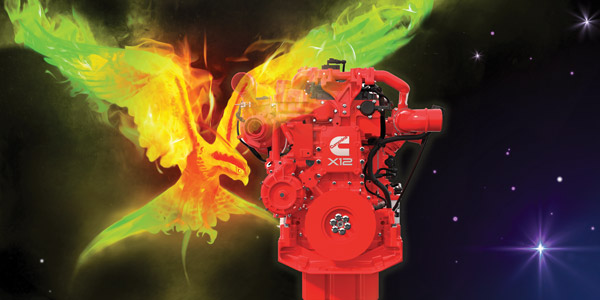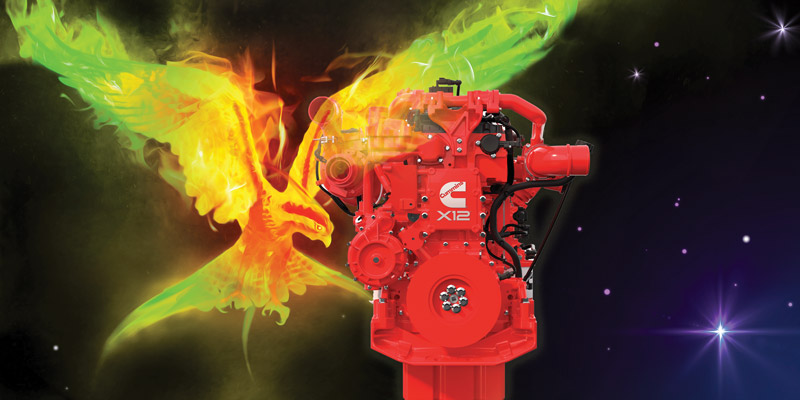
It’s easy to get caught up in the latest head-spinning equipment advances and overlook the fact that the truck is a complex system. When one component evolves, its operation changes; those changes impact tried-and-true components like coolant mixtures more than you might think.
Need proof?
Consider downsped powertrains using high-temperature, high-shear (HTHS) low viscosity API FA-4 oils.
“Downsped engines run more efficiently but the coolant can be exposed to higher temperature; therefore, it’s important for heat exchangers to remain clean and deposit-free to maintain heat exchange efficiency,” said Stede Granger, OEM services manager with Shell Global Solutions.
“If the coolant is not in good condition, it can cause the engine to run hot, which will negatively impact oil life,” added Colin Dilley, Ph.D., vice president of technology for Prestone Products Group.
An overheating engine can cause HTHS oils to thin, causing engine wear. If anything, remember this:
“The newer engines are relying more heavily on the coolant system to manage the heat throughout the engine and auxiliary components,” said Dan Holdmeyer, Chevron Delo North America industrial sector manager.
What else can we learn?
Let’s stay on temperature’s impact on coolants, but this time, the ambient temperature. Coolant’s freeze point depends on its mixture.
Pop quiz! What are the three typical components that make up a coolant?
Here’s Holdmeyer with the answer:
“Most coolants are made up of three distinct components: water, glycol [propylene or ethylene], and additives [corrosion inhibitors]. The mixture of water and glycol lowers the freeze point of the coolant. Individually, water and glycol each have a freeze point much higher than the mixture of the two. The concentration of each dictates the freeze point.”
“Depending on cold-weather extremes, the mixture of antifreeze concentrate and water should be 40% to 60% by volume,” Prestone’s Dilley said. “In very extreme cold weather, a mixture of 70% antifreeze and 30% water may be used.”
The most common mixture, 50/50, provides freeze protection down to -34°F.
“For northern areas that experience extreme cold in the winter time, customers might choose 60/40 coolant [approximately -60 °F freeze protection],” Shell’s Granger said.
Here comes the big, bold takeaway from Dilley: Never have more than 70% antifreeze by volume. This is because at that level, the antifreeze/coolant’s freeze point begins to rise, which will cause the engine to run hot, causing overheating.
He also said that the incorrect mixture of antifreeze/coolant and water can result in catastrophic engine failure due to a cracked engine block or the inability to remove heat from the engine due to slushy semi-frozen coolant that cannot circulate.
Check the coolant in the summer too
If freezing coolant sounds awful, boiling coolant can be just as devastating.
“It is important not to forget glycol concentration in the summer, since glycol also provides boil-over protection and prevents vapor blanketing at heat rejecting components,” said Dakota Johnson, Cummins Filtration product manager for coolants and chemicals.
“In Southern regions, many fleets use a 40/60 mixture of glycol and water,”
Chevron’s Holdmeyer said, “which provides a freeze point of -12°F, but the coolant provides better heat transfer to keep the engine cool during the hot summer months.
“It’s commonly thought that the most critical time to do coolant system preventive maintenance is before winter. No one wants to have to deal with an engine breakdown on the road, or in the field, in bitter cold weather.
“However,” he continues, “it is just as critical to maintain your coolant system in the summer because these newer engines are putting greater thermal loads on the coolant systems than their predecessors.”
What about maintenance: Are cold-weather coolant checks the same all year round?
Yep.
Here are Holdmeyer’s high-level recommendations:
- Keep the system full;
- Check and maintain the proper concentration for proper freeze and boil over protection;
- Tighten clamps to stop any leaks;
- Check color to note any contamination or coolant break down;
- Check for additive concentration; and
- Check the radiator cap for proper sealing.
(Obligatory editorial disclaimer: Check with your engine manufacturer and coolant supplier to make sure you’re following the right coolant maintenance practices.)
“Glycol concentration should be checked using a test strip or refractometer to ensure the proper mixture is maintained,” Johnson said. “In addition to this, it is also a good opportunity to check the system additive levels with test strips or coolant lab analysis to ensure the system is protected from corrosion and cavitation.”
Prestone’s Dilley noted that a refractometer will give you the most accurate results.
“If the fleet manager is not in control of who tops off the cooling system, freeze point should be tested as often as possible because it may not be known if concentrated coolant or pure water was used,” he said. “It also doesn’t hurt to check the pH and nitrite levels at the same time to give the fleet manager an idea of the condition of the coolant. If the coolant is not within specs, then a lab analysis or a complete flush and fill should be performed.”
Can’t get enough knowledge on coolant? Click here to read more facts you need to know about today’s coolants.














